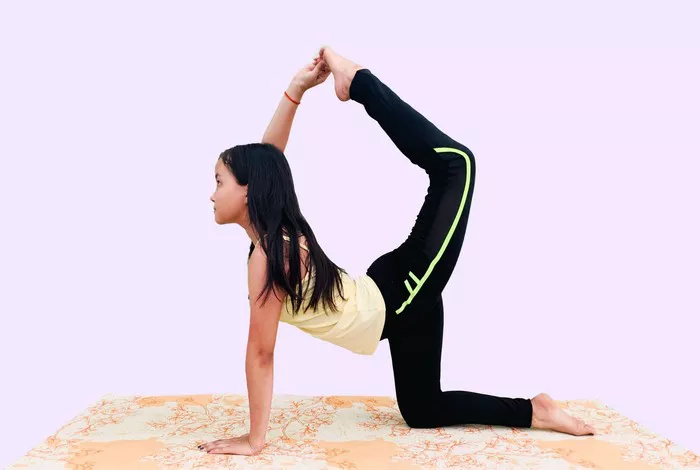Siddha Yoga, a profound and ancient system of spiritual practice, has garnered the attention of yoga practitioners and seekers worldwide due to its deep-rooted philosophical foundations and transformative effects. With a history that stretches back millennia, this particular style of yoga offers unique practices aimed at spiritual awakening, self-realization, and the attainment of inner peace. As a yoga instructor with years of experience, I am often asked about the power and benefits of Siddha Yoga, especially by individuals who are seeking a higher sense of purpose, balance, and enlightenment.
This article delves into the multifaceted powers of Siddha Yoga, outlining its core principles, practices, and the transformative effects it can have on the mind, body, and spirit. Whether you are an experienced practitioner or new to the practice, understanding the potential powers of Siddha Yoga can inspire and guide you on your journey of self-discovery.
Understanding Siddha Yoga
Siddha Yoga is a spiritual practice that integrates physical postures (asanas), breathing techniques (pranayama), meditation, and profound teachings on the nature of the self. The word “Siddha” means “accomplished” or “perfected,” and “Yoga” refers to the union of body, mind, and spirit. Therefore, Siddha Yoga can be understood as the path that leads to spiritual perfection or the union with the divine.
At the heart of Siddha Yoga lies the recognition of the power of the individual soul (Atman) and its innate connection to the universal consciousness (Brahman). Practitioners of Siddha Yoga aim to awaken and harness this spiritual energy to achieve enlightenment. It is not merely a physical practice but rather a holistic approach that works on the mental, emotional, and energetic levels.
The Core Principles of Siddha Yoga
Before exploring the specific powers of Siddha Yoga, it is essential to understand its foundational principles:
1. Self-Realization and Awareness
Siddha Yoga emphasizes the importance of self-awareness and self-realization. By practicing mindfulness and focusing on the present moment, practitioners cultivate a deeper understanding of their true nature. This awareness extends beyond the physical body, connecting the individual to a higher state of consciousness.
2. Shaktipat: Transmission of Energy
One of the central aspects of Siddha Yoga is the concept of Shaktipat, which refers to the transmission of spiritual energy from a realized guru (teacher) to the student. Through this powerful initiation, the practitioner experiences an awakening of their inner energy (Kundalini), which accelerates their spiritual progress.
3. Kundalini Awakening
Kundalini, often symbolized as a coiled serpent, represents the dormant spiritual energy at the base of the spine. Through practices such as meditation, breath control, and specific asanas, Siddha Yoga seeks to awaken this energy and allow it to rise through the chakras (energy centers), leading to profound spiritual awakening and transformation.
4. Integration of Mind, Body, and Spirit
Siddha Yoga promotes the integration of mind, body, and spirit. Through regular practice, individuals can purify their thoughts, release mental and emotional blockages, and align their physical body with their higher spiritual aspirations. This holistic approach helps to harmonize all aspects of life, leading to a state of inner peace and contentment.
5. Guru-Disciple Relationship
In Siddha Yoga, the relationship between the guru (spiritual teacher) and disciple is sacred. The guru serves as a guide and mentor, providing wisdom, support, and Shaktipat initiation. The disciple, in turn, practices the teachings with sincerity and devotion, following the guru’s guidance to achieve spiritual awakening.
Powers of Siddha Yoga
Now that we have a fundamental understanding of Siddha Yoga, let’s explore its transformative powers. These powers manifest as both physical and spiritual benefits, resulting from dedicated practice and the awakening of one’s inner potential.
1. Spiritual Awakening and Self-Realization
The primary power of Siddha Yoga is the ability to awaken the dormant spiritual potential within. Through the practice of meditation and breathwork, a practitioner gains insight into their true nature, experiencing profound moments of realization. This leads to self-awareness and a deep sense of connection to the universe. As the practitioner deepens their practice, they become increasingly attuned to their divine essence and their purpose in life.
2. Healing and Purification
Siddha Yoga has a powerful healing effect on the body and mind. By clearing emotional blockages and mental patterns, the practice facilitates the release of negative energy, leading to a sense of emotional freedom. Additionally, the physical postures and breathing techniques help detoxify the body, improve circulation, and promote overall health. Many practitioners report feeling rejuvenated and physically revitalized after regular practice.
3. Calm and Balanced Mind
One of the key effects of Siddha Yoga is its ability to bring peace and tranquility to the mind. In today’s fast-paced world, many people suffer from stress, anxiety, and mental clutter. Through practices such as meditation and pranayama (breathing exercises), Siddha Yoga helps calm the restless mind and cultivate inner stillness. This balanced state of mind allows individuals to approach life’s challenges with greater clarity, patience, and equanimity.
4. Heightened Intuition and Psychic Abilities
Siddha Yoga practitioners often experience an increase in intuitive abilities as they progress on their spiritual path. Through deep meditation and the awakening of the Kundalini energy, individuals may begin to perceive subtle energies, experience heightened intuition, and gain insights beyond ordinary perception. These abilities are not sought for personal gain, but rather emerge naturally as a result of spiritual awakening and the cultivation of inner wisdom.
5. Increased Energy and Vitality
The awakening of the Kundalini energy is often accompanied by an increase in personal energy and vitality. As the spiritual energy rises through the chakras, it activates dormant powers within the body, revitalizing the physical system. Many practitioners report feeling more energetic, alive, and focused as they deepen their practice.
6. Freedom from Limiting Beliefs and Attachments
Siddha Yoga encourages practitioners to confront and release limiting beliefs, attachments, and negative thought patterns. Through deep meditation and contemplation, individuals become more aware of the mental habits that keep them trapped in cycles of suffering. By recognizing these attachments, practitioners can work to release them, leading to greater freedom and emotional resilience.
7. Transformation of Negative Emotions
Negative emotions such as anger, fear, and jealousy are common obstacles on the spiritual path. Siddha Yoga helps to transform these emotions through mindfulness and energy work. By cultivating compassion, love, and non-attachment, practitioners learn to respond to challenging emotions in a balanced and constructive way, leading to emotional maturity and greater emotional intelligence.
8. Enhanced Concentration and Focus
Siddha Yoga practices such as meditation, breath control, and mantra chanting greatly improve concentration and focus. As the mind becomes clearer and more centered, individuals find it easier to direct their attention to a single task without distraction. This enhanced mental clarity supports productivity, decision-making, and creative expression.
9. Sense of Inner Peace and Contentment
One of the most profound powers of Siddha Yoga is the sense of inner peace and contentment that arises from within. As practitioners move closer to self-realization, they develop a deep sense of gratitude and joy that is independent of external circumstances. This state of inner peace remains unshaken, even in the face of adversity.
10. Union with the Divine
The ultimate power of Siddha Yoga is the union with the divine consciousness, or the realization of one’s oneness with the universe. Through sustained practice and guidance from a realized teacher, Siddha Yoga practitioners experience the ultimate state of spiritual liberation, also known as Moksha. In this state, the practitioner transcends the limitations of the ego and experiences the boundless love and light of the divine.
The Role of the Guru in Siddha Yoga
As with all forms of yoga, the role of the guru is pivotal in Siddha Yoga. The guru serves as the guiding light, offering teachings, wisdom, and energetic transmission to the disciple. It is believed that through the guru’s grace and blessings, the practitioner is able to navigate the complexities of the spiritual path more effectively.
The relationship between the guru and the disciple is founded on trust, devotion, and respect. The guru imparts knowledge, practices, and initiates the disciple into higher states of consciousness. Through Shaktipat and spiritual teachings, the guru accelerates the disciple’s journey toward enlightenment.
Conclusion
Siddha Yoga is a transformative practice that offers profound spiritual and physical benefits. Its powers lie in its ability to awaken the inner potential of the practitioner, guiding them toward self-realization, inner peace, and ultimate liberation. By practicing mindfulness, meditation, and energy awakening techniques, Siddha Yoga empowers individuals to live more harmoniously with themselves and the world around them.
For those on a spiritual journey, Siddha Yoga provides a powerful tool to transcend the limitations of the ego, transform negative emotions, and experience a deeper connection with the divine. Whether you are seeking healing, personal growth, or enlightenment, Siddha Yoga offers a path that leads to the realization of your true nature and the unfolding of your highest potential.
Related Topics:


























